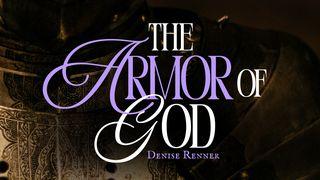Lessons From CarolsSample

“Silent Night, Holy Night” is the most recorded song in history. There are over 137,000 recorded versions of this beloved carol! It has been sung in over 140 languages and remains one of the most popular carols of our time. But it would never have been written if it weren’t for a broken church organ…
1. Silent night, holy night, all is calm, all is bright
Round yon virgin mother and child! Holy Infant so tender and mild,
Sleep in heavenly peace. Sleep in heavenly peace.
2. Silent night, holy night, shepherds quake at the sight!
Glories stream from heaven afar, heavenly hosts sing “Alleluia”
Christ the Savior is born. Christ the Savior is born.
3. Silent night, holy night, Son of God, love's pure light
Radiant beams from Thy holy face, with the dawn of redeeming grace,
Jesus, Lord, at Thy birth. Jesus, Lord, at Thy birth.
4. Silent night, holy night, wondrous star, lend the light;
With the angels let us sing, “Alleluia to our King”
Christ the Savior is born. Christ the Savior is born.
In 1816, a priest named Joseph Mohr wrote the lyrics while walking to church one evening. Two years later, he was the priest in the tiny Austrian village of Oberndorf. While preparing for the Christmas Eve service, Mohr noticed that the organ was broken. In a panic, he visited the church organist, Franz Gruber, to devise a solution. Mohr gave Gruber the lyrics from two years earlier and instructed him to write a song for guitar and vocals. After several hours, Gruber arrived with music in hand and taught the song to the tiny church choir. The carol grew in popularity throughout Europe. Later on, troops would sing the carol during Christmas truces in the American Civil War and World War I. The song provided a brief reprieve in otherwise horrible wars.
Scripture tells us that the first night of Jesus’ life on earth was anything but silent (or calm, as the first stanza says). “Silent Night, Holy Night” is a lullaby sung to the baby Jesus. The lyrics tell us that as an infant, Jesus was tender and mild. Matthew 11:29 tells us that Jesus is “gentle and lowly in heart.” Jesus was not gentle and lowly or tender and mild only during His infancy. He was that way throughout His life, and, even now, as He intercedes for us in heaven, He is still tender and mild. Calling Jesus tender or gentle emphasizes His steadfast love for His people. Since Jesus is lowly and mild, He is humble and accessible. Since Jesus is all those things, we know that we can approach Him in prayer at any time and He will answer us.
The carol’s second stanza speaks of the not-so-silent occurrences at Jesus’ birth. According to the verse, an army of angels sang “Alleluia.” Alleluia is a Hebrew word meaning “Praise God.” And that is what the angels were doing: praising God! They were announcing that Christ, the Savior, had been born! And the angels were not quiet about it.
The third stanza refers to Jesus as the Son of God and love’s pure light. John 3:16 tells us that Jesus was the Son of God. But what about “love’s pure light?” Jesus, in John 8:12, called Himself the light of the world. The most important line in the carol’s third stanza is that with Jesus’ birth came the dawn of redeeming grace. God, through the birth of His Son, ushered in the means of redeeming grace. Jesus Christ came to earth to live and die for those who believe. Our salvation began with the birth of Mary’s precious baby boy.
About this Plan

During the holiday season, Christmas carols are everywhere. They play on the radio, in grocery stores, on television shows and movies, and on social media. It makes sense, then, that we should look at these carols. What are the stories behind them? What scriptural truths do they hold? Do they conflict with the Bible? This seven-day study will answer those questions and acquaint you with some of Christianity’s most beloved songs.
More









